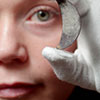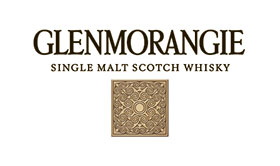The idea of a shared Celtic heritage across ancient Europe retains a powerful hold over the popular imagination. But many common ideas about the people known as ‘Celts’ are in fact more recent re-imaginings, revived and reinvented over the centuries.
Celts, our special exhibition, unravels this complex story through extraordinary objects dating from the Iron Age through to the Celtic revival. This blog, split into two parts, looks at the role that one material – silver – played in this rich and intriguing story.
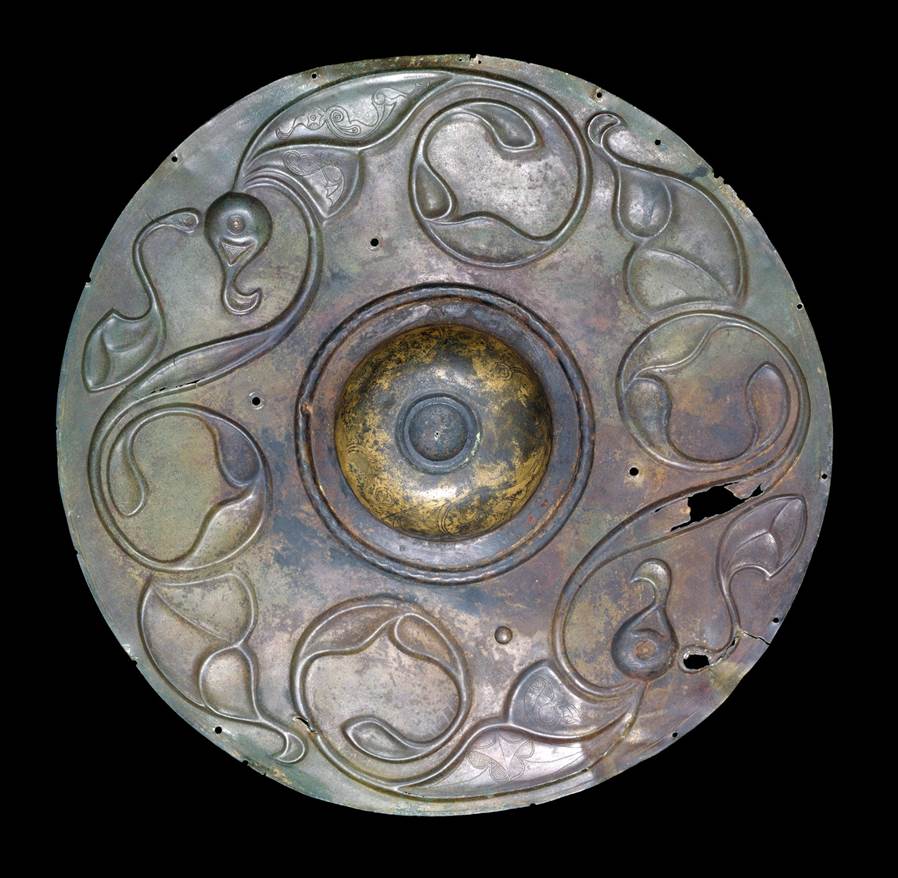
The exhibition opens in the Iron Age, showcasing the innovative and complicated Celtic arts of ‘A connected Europe’ (around 500–150 BC). Unlike classical art, ambiguity rules in Iron Age Celtic art, with swirling spirals and hidden animals. Rendered in bronze and gold, complicated and powerful designs gave supernatural powers to prestigious objects. Related motifs, ways of seeing and rendering the world, would have been apparent to powerful people elite across temperate Europe.
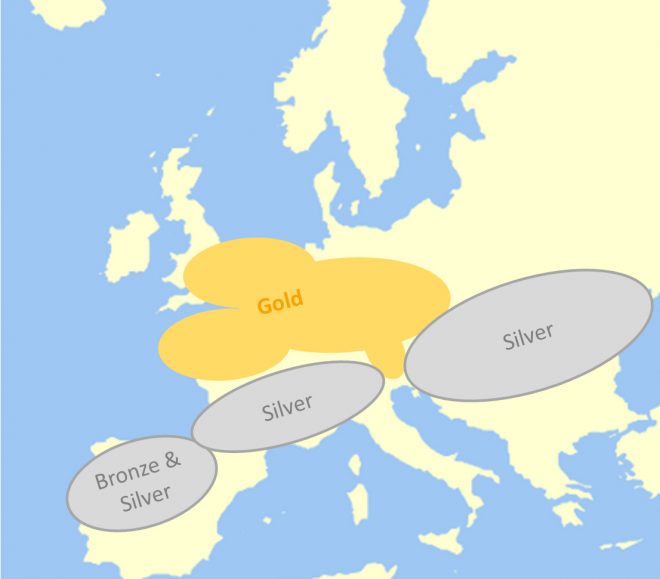
In Iron Age northern Europe, and in the opening of the Celts exhibition, silver is conspicuous by its absence. This is part of a broad trend in the use of metals: broadly speaking, Iron Age coinage can be divided into a silver belt, a broad swathe from the Bay of Biscay to the mouth of the Danube, and a gold belt to the north. This map of coinage use also reflects patterns in the precious metals used to make other types of things – silver objects are rare in northern Europe until near the end of the Iron Age when Rome made her presence felt, supplying quantities of silver.
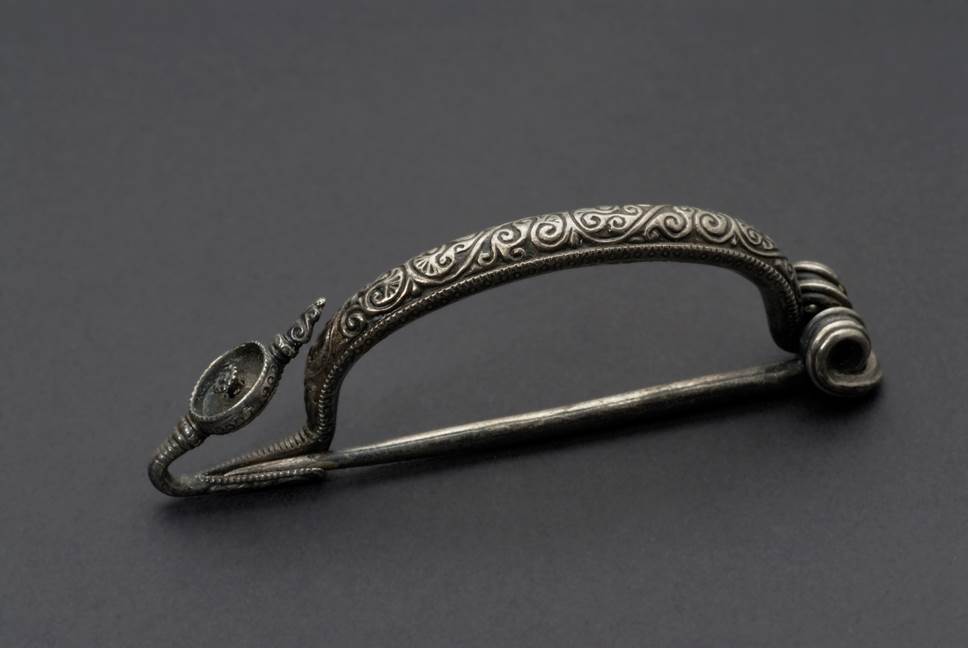
The rarity of silver in Iron Age Celtic art makes the first silver object you encounter in Celts, small though it may be, very important – it is a very rare silver brooch found outside of the silver belt, from Bern-Schosshalde in Switzerland and dating to the 4th century BC. It is exceptional not only because it is silver but also because of its high level of workmanship.
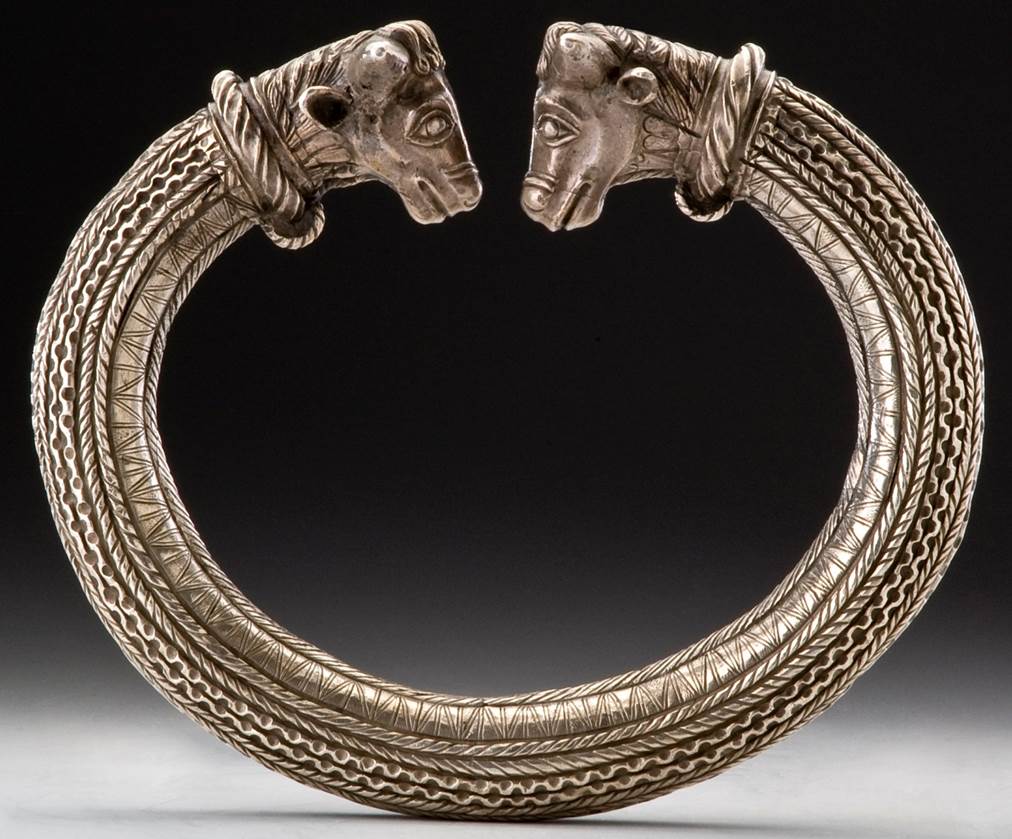
This rarity of silver in northern Europe means that the silver objects that survive are exceptionally rare and sometimes exceptionally difficult to explain. That is certainly the case for this object – a massive torc from Trichtingen in Germany. You have to visit Celts to appreciate its scale – it is formed around an iron core and weighs almost 7kg. This weight, combined with its inflexibility, means it probably was never worn around the neck as torc, but perhaps was made to elaborate a statue. It is such an exception that it is thought to have been imported from south-eastern Europe, from within the silver belt.
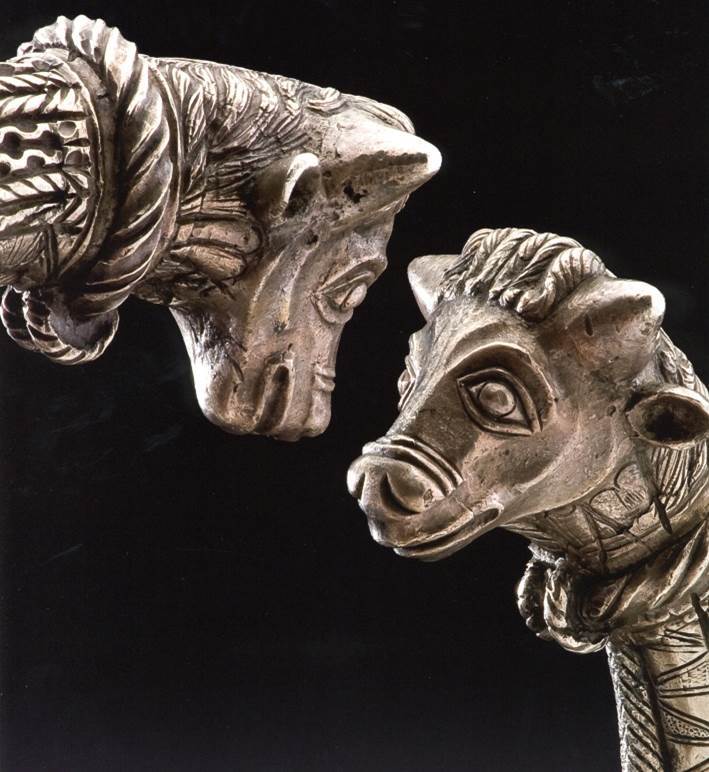
I like the fact that each of the bulls is itself shown with a torc – these are separate pieces that have been made and fitted around their necks meaning that they are literally wearing miniature torcs.
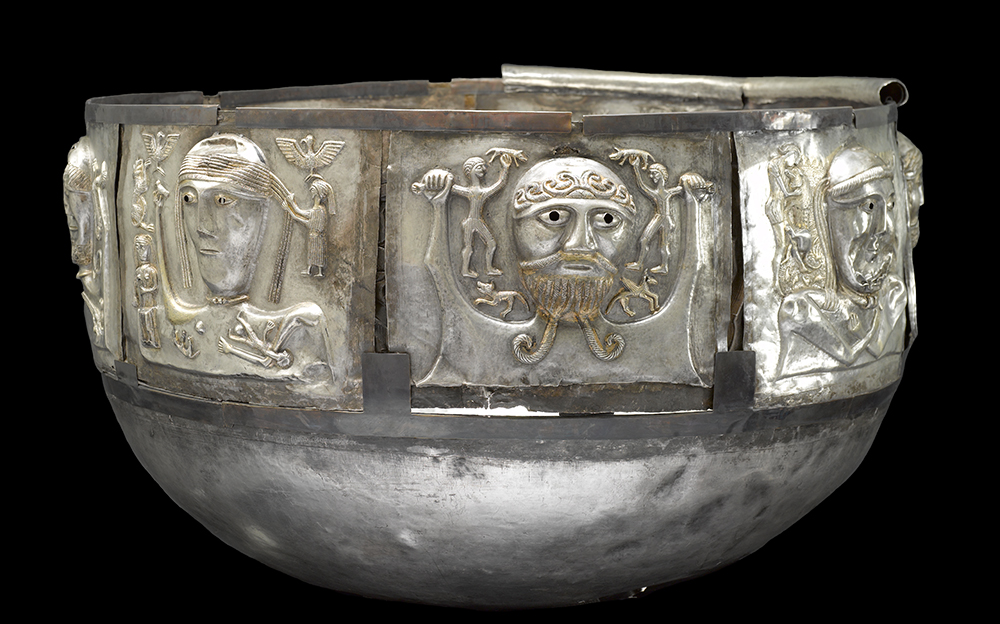
This magnificent silver cauldron from Gundestrup in Denmark is in many ways the star of the Celts show. It is one of the most important and intriguing finds from ancient Europe, revealing connections between communities thousands of miles apart. While it is often called Celtic, it takes us far beyond any simple idea of the Celts. The use of silver combined with stylistic analysis has suggested to some that it was Thracian in origin, made in modern-day Romania or Bulgaria, in the silver belt. But while many of the scenes that decorate the cauldron are fantastical, they nonetheless include objects typical of western and central Europe, such as the carnyx. The cauldron ended its life far from where it was made, buried as an offering in a Danish bog. We are dealing here with a connected and complicated world, not just a Celtic one.
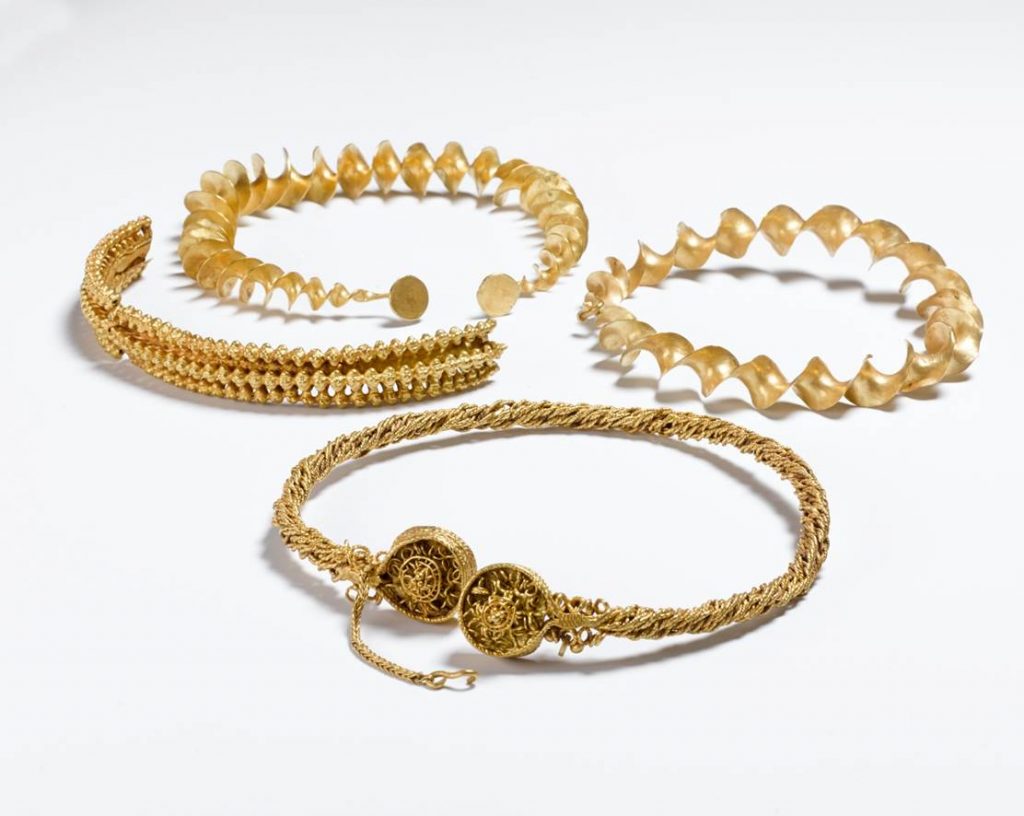
Torcs are one of the key attributes that classical authors defined as Celtic, though this is a simplification – variations of torcs are found from across Europe. Those from northern Europe look like they are made from gold, though in fact all typically contain gold, silver and copper in varying quantities. It took great skill to manufacture torcs like these, not least to balance the proportions of the three metals to achieve minimum gold content whilst retaining the gold colour. This involved repeated heating (annealing), working and pickling to remove copper from the surface. Among the ‘gold’ torcs buried as a hoard at Blair Drummond, near Stirling is one that is very similar to a type of torc found in southern France. But here the amount of silver present within the alloy suggests that the story is not as simple as an import from further south.

Another area where silver is present but not always visible is Iron Age coinage – here is a selection of coins showing the range of alloys and resulting colours. So although there is broadly speaking a silver belt across the south and east of continental Europe, and a gold band to the north, as with so many things relating to Celtic art the reality is not quite as simple as that. The explanation for these different alloys, balancing gold, silver and copper, and their resulting colours isn’t a simple one – there is no simple change over time for instance, and different colours probably had varying symbolic significance resulting from deliberate choices during manufacture.
Look out for my next blog post which will pick up the story of silver in Celts at the end of the Iron Age – looking at the influence of Rome and the importance of the metal in early medieval Scotland.
I’ll also be doing a Facebook Live broadcast on Thursday 14 July at 17:15 BST, so tune in on the National Museums Scotland Facebook page.
Celts a major exhibition, organised in partnership with the British Museum, is showing at the National Museum of Scotland from 10 March – 25 September 2016.
The Glenmorangie Research Project aims to extend our understanding of Scotland’s Early Medieval past and was established in 2008 following a partnership between National Museums Scotland and The Glenmorangie Company. The current phase of research, Scotland’s Earliest Silver: power, prestige and politics will look at the biography of this precious metal as it was used and reused in Early Medieval Scotland.
Scotland’s Early Silver exhibition is at the National Museum of Scotland until 25 February 2018 and follows three years of research supported by The Glenmorangie Company.
